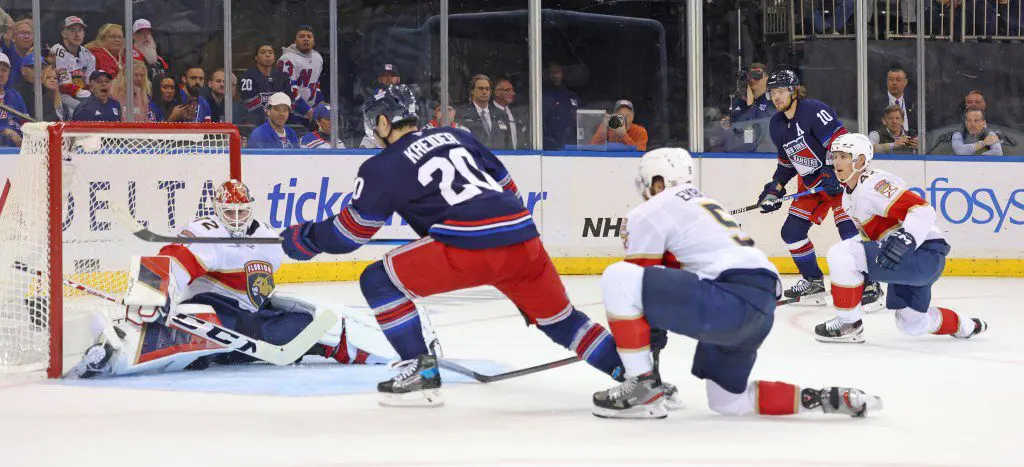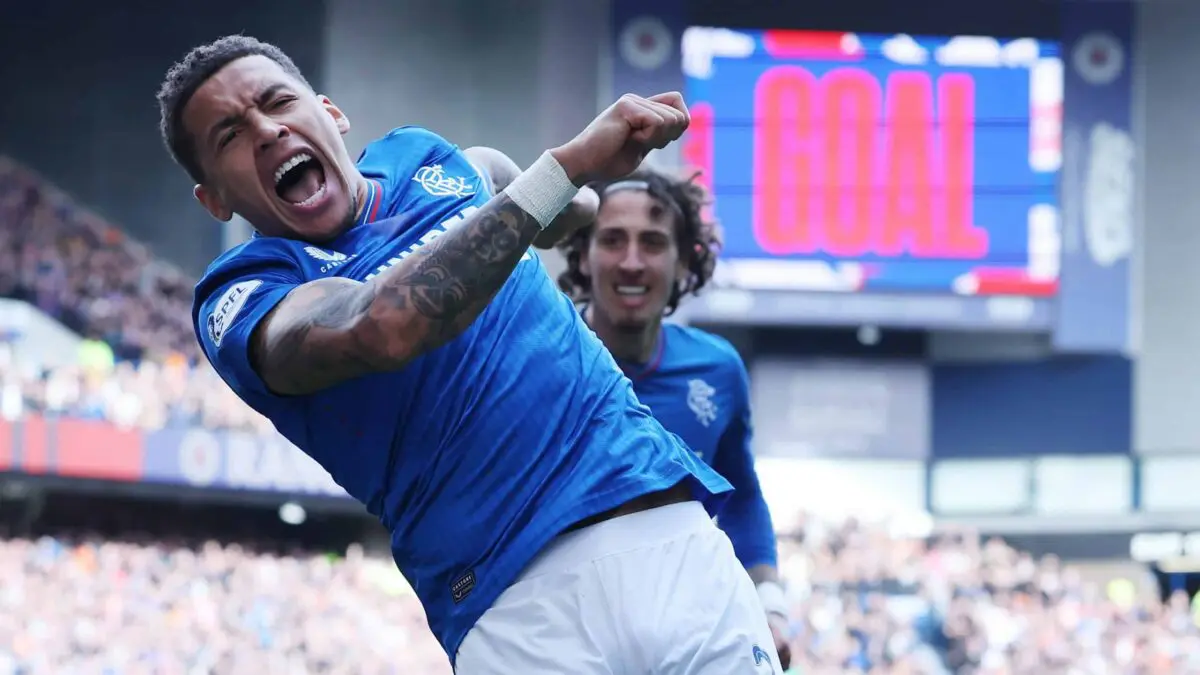The ongoing dispute between Altice USA’s Optimum and MSG Networks has left many sports fans in a lurch. Particularly shocking was the sight of Dennis Mathews, Altice’s CEO, at Madison Square Garden, enjoying a Rangers game amidst this tumultuous situation. As he cheered for the Rangers, fans at home were left fuming, unable to watch their favorite team due to a blackout resulting from a payment dispute. This intriguing situation raises questions about corporate responsibilities and customer access to local sports content.
The Dispute Explained
Broadly speaking, the conflict began when Optimum and MSG Networks entered into protracted negotiations over carriage fees, which resulted in Altice ceasing to air Rangers and Knicks games beginning January 1, 2025. This decision not only affected die-hard hockey and basketball fans but also sparked heated debates about the rising costs of accessing local sports programming. Traditional cable providers like Optimum face increased challenges in retaining subscribers amid cheaper streaming alternatives.
Altice’s stance is that the proposed fee increases are unreasonable, especially since a sizable proportion of their customer base may not even watch these sports. Their argument emphasizes fairness: why should customers who aren’t fans of basketball or hockey be expected to subsidize those who are? This concern begins to gain traction as throughout the United States, many cable providers rethink their content strategies.

Understanding Carriage Fees
Carriage fees are payments made by cable and satellite providers to broadcasters. They are vital for the finances of those networks, enabling them to produce and syndicate content that viewers enjoy. However, as these costs rise, the burden is ultimately passed on to consumers, which can lead to backlash against the providers. During the negotiation, it was revealed that Altice pays MSG about $10 per subscriber, prompting outrage from Altice when MSG requested a raise.
This situation begs a clearer understanding of how carriage fees work and what they’re intended to cover. Networks argue that fees help cover production costs, but as audiences shrink due to the rise of streaming services, the validity of these original charges is called into question. If cable companies are forced to pass these increased costs onto loyal customers, one must wonder: is it worth it for the consumer?
Consumer Backlash
The fallout from this dispute has engaged many sports fans, especially those who rely on Optimum to enjoy their local teams. Social media avenues have been flooded with complaints, and various local news stations have covered the story extensively. Subscribers have taken their frustrations to Facebook and Twitter, advocating for a resolution that will allow them to see their teams play again.
This backlash has also led to a wave of media focus on cable providers and their responsibility to constituents. As discussions rage on social media, correct narratives about the pricing and content accessibility must prevail. Subsequently, local sports radio stations have started taking calls from angry fans, which showcases just how deeply intertwined sports are with local culture and identity.

Corporate Responsibility and Accountability
At the center of this unfolding drama is corporate responsibility. With major companies like Altice holding significant sway over the broadcast capabilities of sports events, ethical questions arise regarding their obligations toward consumers. Are they truly committed to serving their customers, or are they more focused on the bottom line? In this age of public accountability, firms must tread lightly as they navigate these turbulent waters.
Many consumers will argue that corporations should prioritize access to entertainment and content that enhances their lives. The fact that Mathews was spotted enjoying a game with others highlights a detachment from the frustrations faced by paying customers. The optics are decidedly poor, and this situation only deepens the distrust and displeasure that many Optimum subscribers have for the company’s leadership and overall approach to service.
Historical Context
Looking at the historical backdrop, sports broadcasting rights have been fiercely contested for decades. This conflict between cable providers and networks like MSG is not unique. As consumers have transitioned from cable to digital services, the traditional model’s sustainability has come into question. Throughout history, sports fans have championed their teams, often finding themselves caught in the crossfire of corporate negotiations.
In years past, similar disputes have escalated, resulting in protracted negotiations and fan disenfranchisement. For instance, take the infamous ESPN cable disputes of the late 2010s, where fans found themselves without access to key events like March Madness and the NFL playoffs due to pricing negotiations. Each occurrence leaves an imprint, demonstrating the weaknesses within the corporate framework that governs sports accessibility today.
Future Considerations
What lies ahead for Optimum subscribers and sports fans in New York? As fans continue to voice their discontent, it remains to be seen how Altice and MSG will navigate these troubled waters. With the rise in the number of streaming platforms offering a wide array of sporting events, the pressure is on traditional cable providers to innovate and adapt their business models.
Will Optimum reevaluate their strategy? Will they engage in more transparent negotiations with MSG Networks? The increasing consumer dissatisfaction suggests that they cannot continue along this path without meaningful changes. For many fans, the stakes have never been higher. The outcome of this negotiation is not just about games; it reflects broader issues about the accessibility of local content within an increasingly digital landscape.

Innovative Solutions?
In pursuit of resolving these conflicts, possible innovative solutions could emerge. One concept could involve creating tiered access plans, where fans can choose to pay extra for sports packages while allowing non-sports viewership to remain unsubsidized. This type of strategy exists in various forms within the streaming landscape and may represent a path forward.
Another potential solution could be for Optimum to establish partnerships with streaming services that already have sports rights, maximizing availability for their subscribers while minimizing disruption. With numerous options cropping up globally, exploring creative avenues can facilitate not only the negotiation process but also provide fans with the access they desperately desire.
Impact on Local Communities
The narrative surrounding this dispute isn’t just a business issue; it’s a community matter. Local fans rally around their teams and derive immense enjoyment from watching games together. Access to regional sports programming fosters community spirit and adds a layer of identity to the region. Beyond the realm of entertainment, it’s about shared experiences and camaraderie, as families and friends gather to cheer for their teams.
When cord cutting and corporate disputes interfere with this, the ripple effects can be significant. Fans organize viewing parties, local businesses may suffer without the foot traffic that sports events usually bring, and the overall morale of the community can dip. With a shared plight, the need for resolution becomes urgent, showcasing a larger movement of consumer solidarity.

The Dance Between Profit and Access
Ultimately, the situation with Optimum, Affected sports fans, and the MSG Network speaks to a larger philosophical question about how corporations function in society. As fans demand access to local content, cable providers like Optimum are increasingly caught in a tug-of-war between profitable operations and satisfying customer expectations. It’s a delicate dance where both parties have an agenda, but the collective voice of the fans often gets drowned out.
With this growing scenario, new forms of media and access models could emerge. Perhaps, a future where fans can dictate terms to providers based on their preferences may become reality, pushing for more inclusivity and access to entertainment.
Conclusion and Forward-Thinking Developments
As we look toward the future, it is vital to watch how this story unfolds. Will Altice and MSG reach a favorable agreement that allows fans to reconnect with their teams? The current state of affairs signals a pivotal moment in the broadcasting industry, where the power dynamics are shifting, and the voice of the consumer cannot be overlooked. In this interconnected, digital age, it becomes imperative that the entities involved embrace communication and partnership, as opposed to retaliation and disputes. Only then can the vibrant hustle of New York’s sports culture be properly represented and enjoyed by all.
The need for communication between cable providers and content networks has never been as crucial as it is today. The collaborative effort towards satisfying fan demands could lead to groundbreaking developments in how sports viewership is structured. By recognizing the mutual benefits of securing content for fans, companies can harness the power of community loyalty while ensuring sports remain a central cultural pillar for the city.
I’m Mikael, a 35-year-old Gossip Gravity Creator. I’m passionate about curating captivating content that sparks conversations and ignites curiosity. Join me on this exciting journey as we explore the fascinating world of gossip and trends together!



